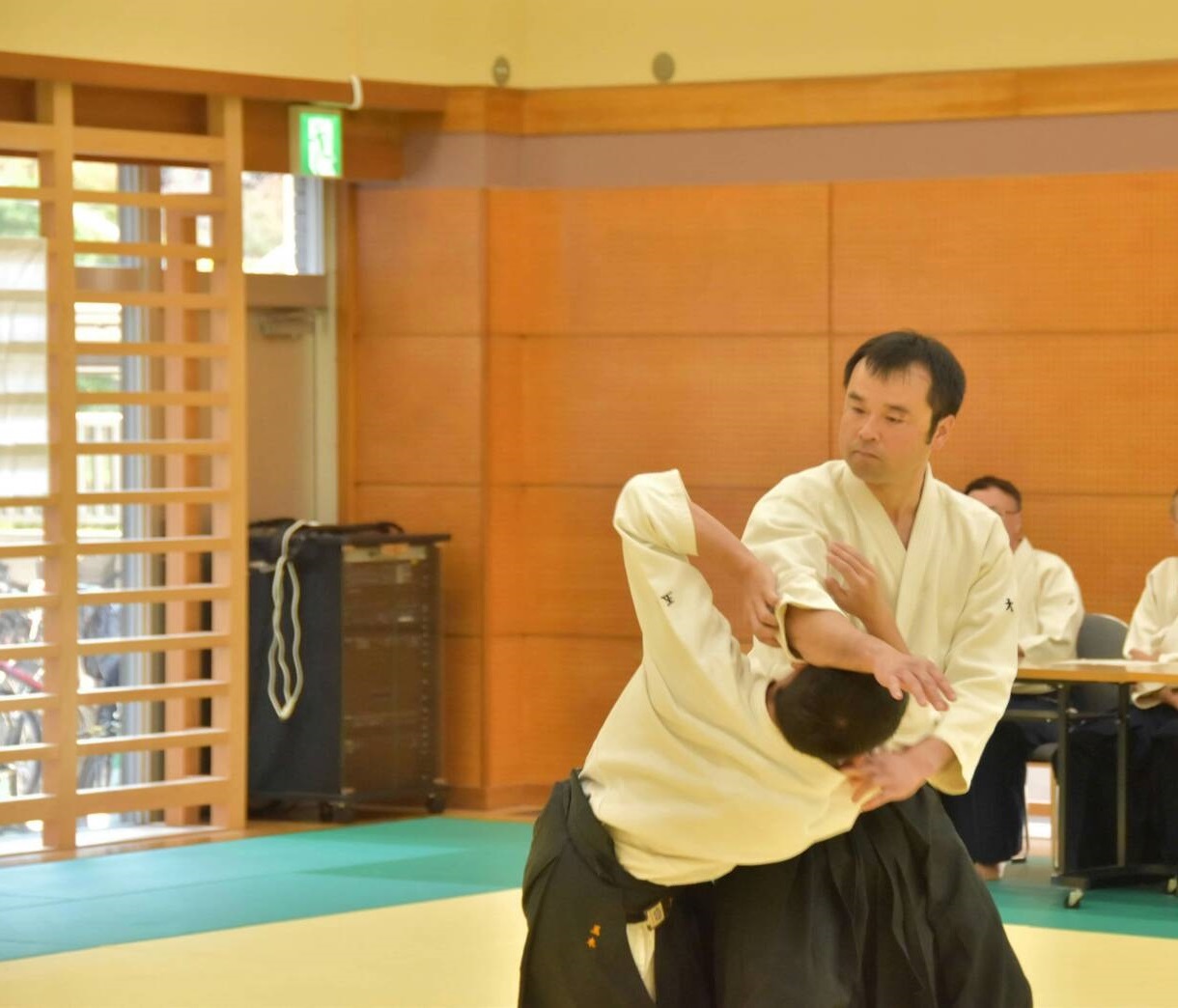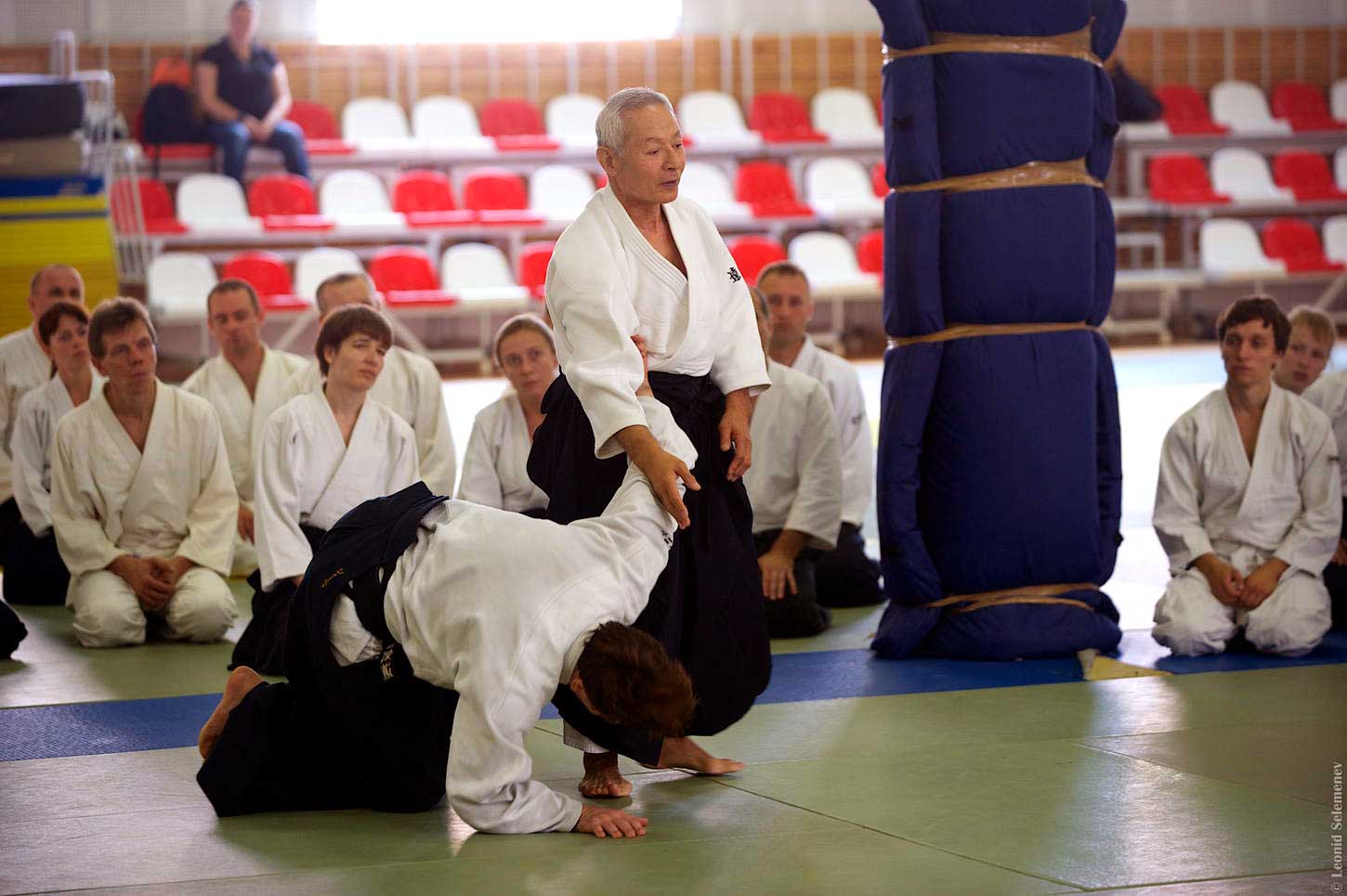
In Review of Instructing at the 2015 Summer Camp ~Oiwa Ryota~
“That place under the blade that is being swung is hell. Take one step forward and it is heaven.” – Miyamoto Musashi
This means that the place that is safe is right in front of one’s eyes. When you think of the opponent’s hand as a blade, this is easy to understand. It means there is no escape, no place to go other than to close the space with the opponent.
In Yamaguchi Seigo’s posthumous manuscripts, it is written, “In that place where you will be cut, there is a place where you will not be cut” (O-sensei’s words?). I think that this is saying the same thing.
In other words, it means that one must find the path to life, the viable path, where there is death. There you will find the opponent’s weak point, where you can enter.
I’ve noticed that such teachings from our predecessors are to be found in the forms of aikido in abundance, especially in the teachings of Endo shihan.
In the class that I taught, I considered the theme of how to ‘close the space’ around techniques related to ikkyo and irimi. In both of these, it is not simply getting closer to the opponent, but grasping the timing of when the opponent begins to move. Then we confirmed how much freedom and possibility (yoyuu) we had in our mind when responding to the opponent. We examined the closing of distance physically the instant the opponent begins to move, and then the mental closing of space, not moving until the instant before the opponent’s attack reaches us. In the first case, the image I have in my mind is of tossing a ball of ki at the partner at that key instant. In the second case, it is leaving the ball with the opponent for a moment. In any case, it is necessary to have a quiet mind, otherwise one cannot see the beginning of the opponent’s movement nor move quietly.
It is a scary thing in the first place to face the opponent, let alone someone holding a live blade. How to take a step forward in that state? I think that the concept of tai-atari (atari / collision / engagement by the body) was applicable here.
The following is from the Book of Five RIngs:
“‘The atari of the body’
The atari of the body is to enter into the opponent and hit the opponent with one’s body. Turn your head a little, put forward your left shoulder, and hit the opponent in the chest. Hit the opponent forcefully and have a mind that is lively. Master this properly and you can do this with different distances from the opponent. You can even kill the opponent with it. Train thoroughly.”
Here, the method for closing the space between oneself and the opponent is tai-atari (worded as atari of the body). I think that this technique is to enter immediately into the partner.
Later, I encountered another teaching of Endo sensei from the Book of Five Rings, about the short-armed monkey. Basically, it means not to (over)use the arms. When we use the hands and arms, it hinders our efforts to close the space.
By having no tension in the hands and arms, freeing the joints, it becomes possible to close the space i.e., do irimi. By extension, I thought this applied not only to iriminage but to katatedori and ryotedori kokyuho.
In today’s practice session, I was so bold as to introduce a piece of such teachings from our predecessors that find life in Endo shihan’s teachings, thinking that it might be interesting to notice or examine our predecessor’s wisdom in Endo shihan’s seminar.
I would like to express my gratitude to Endo shihan for this opportunity to study and gain experience.
